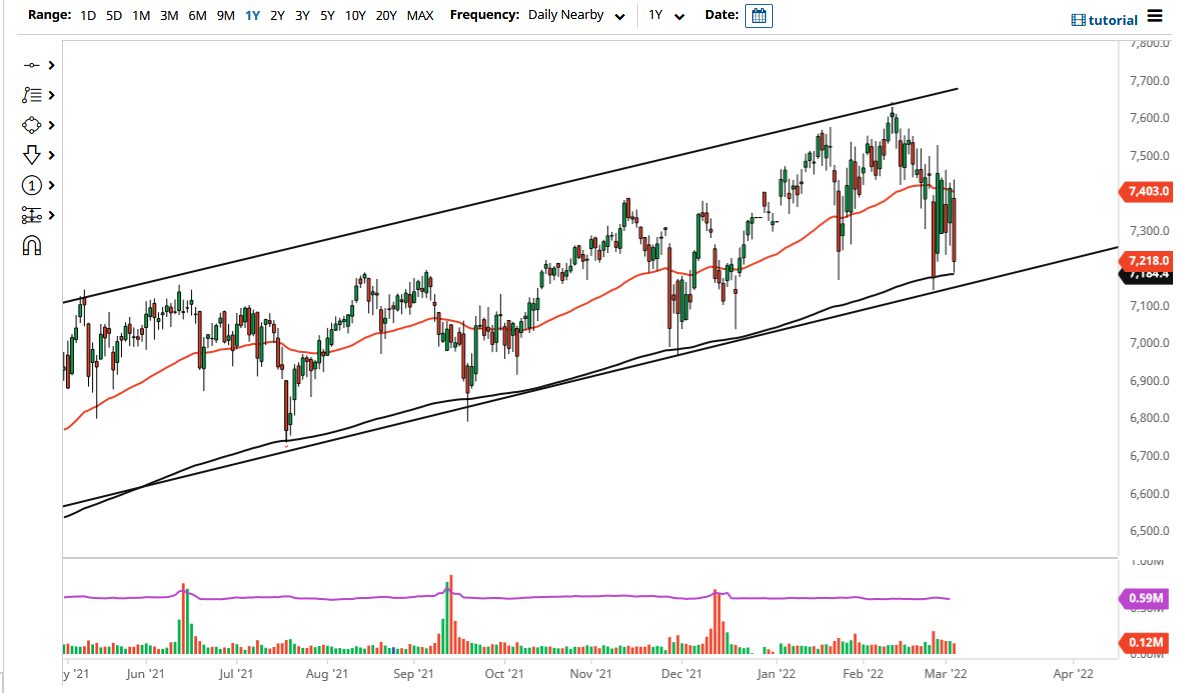The FTSE 100 had a very rough trading session on Thursday as it plunged towards the 200 Day EMA, for the second time in the last 10 sessions. The 200 Day EMA of course will often cause a certain amount of support, as we have seen multiple times over the last couple of years. In fact, when you look at the longer-term chart, you can see that we are near the bottom of a channel that has been fairly reliable.
It is because of this that I think the FTSE 100 will be one of the more interesting indices to watch, as we are sitting right at the precipice of breaking down through the 200 Day EMA, the uptrend line of a major channel, and possibly breaking through the psychologically important 7100 level. All of this together does suggest that we could be ready to see either significant recovery or a large breakdown.
It is worth noting that there is a lot of “risk-off” behavior around the world, so therefore it would not be surprising at all to see the FTSE fail. Another thing that is worth paying attention to is just how large the range of trading has been over the last several sessions in comparison to the normal type of trading that we historically see. Because of this, it shows just how much the volatility has picked up. As a general rule, stock indices do not like wild swings, and they almost always mean something is going wrong.
If we do rally from here, the market is going to have to deal with the 50 Day EMA, currently sitting just above the 7400 level. This is an area that has a certain amount of psychology attached to it and of course, has seen some structural selling. Clearing that level would be very bullish but it would obviously take some type of good news in order to make the markets be more willing to take on risks. Quite frankly, with the global economy looking very much like it is going to go into a recession, it is difficult to imagine buying stocks at all.
There will come a time when the stock indices offer a lot of value, but I think we have a lot more in the way of destruction ago. Geopolitical issues, inflation, slowing growth, and a whole litany of other problems stand in the way of simply buying and holding.

